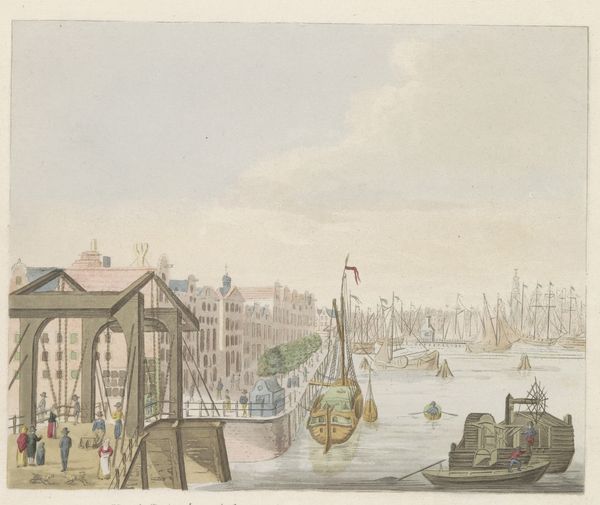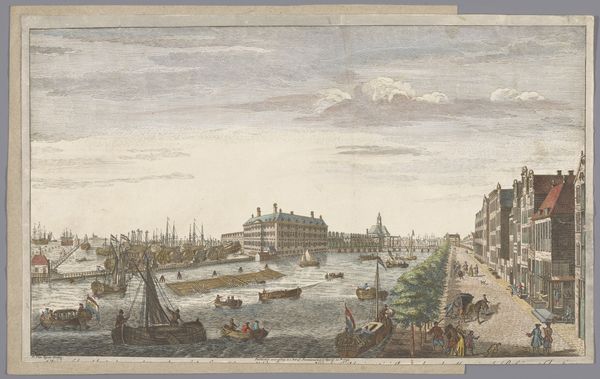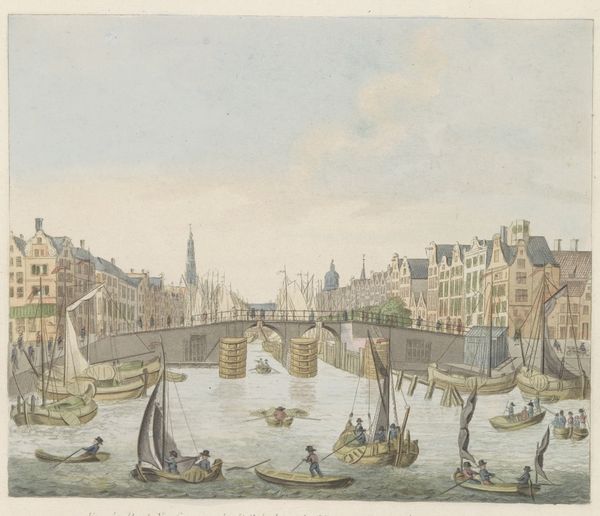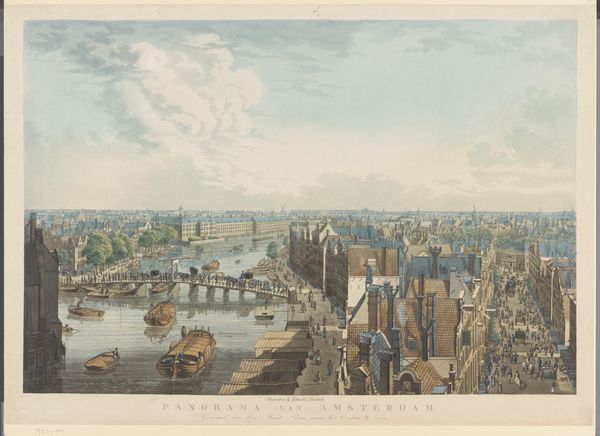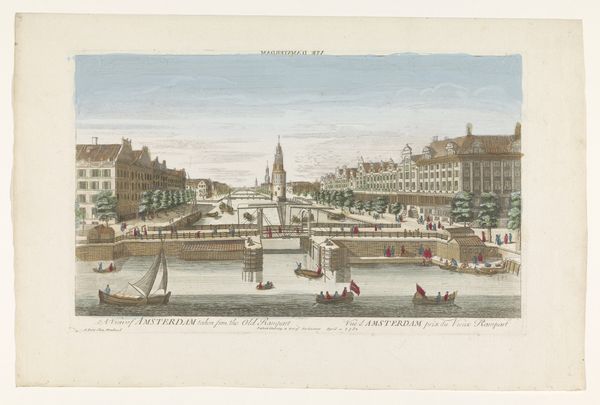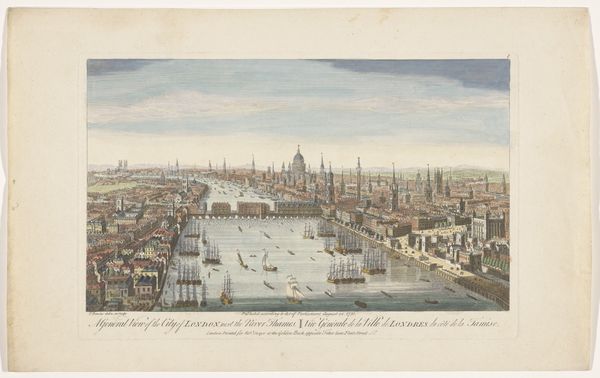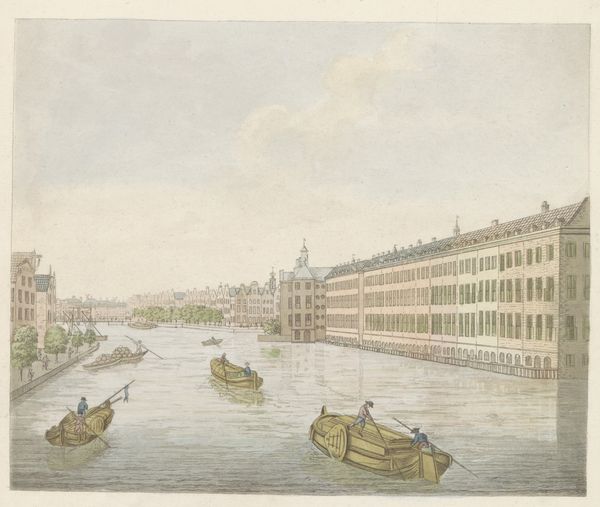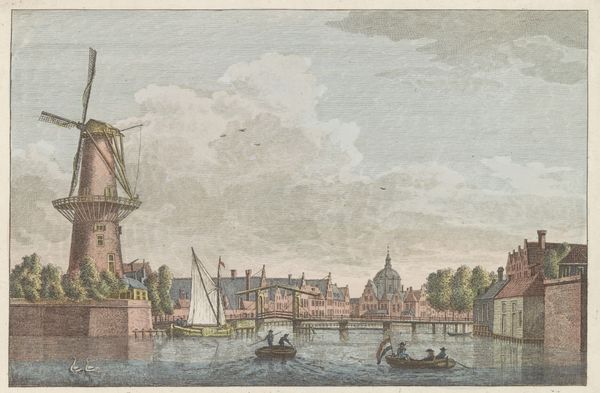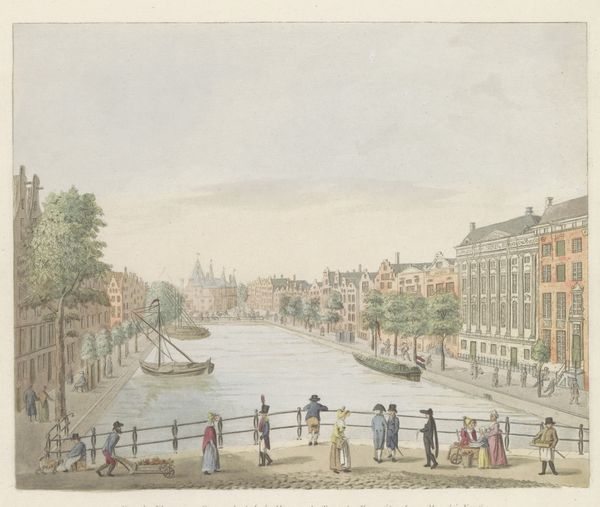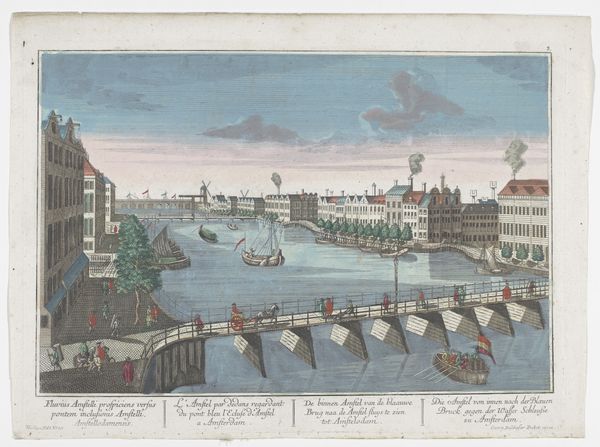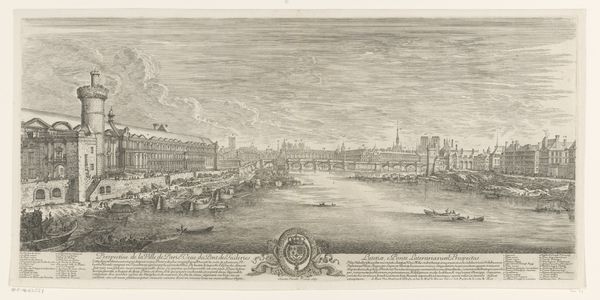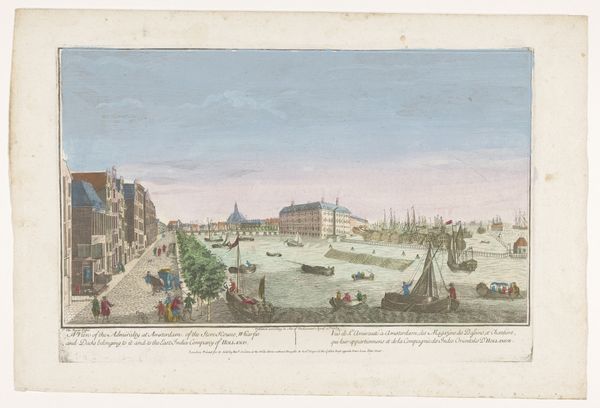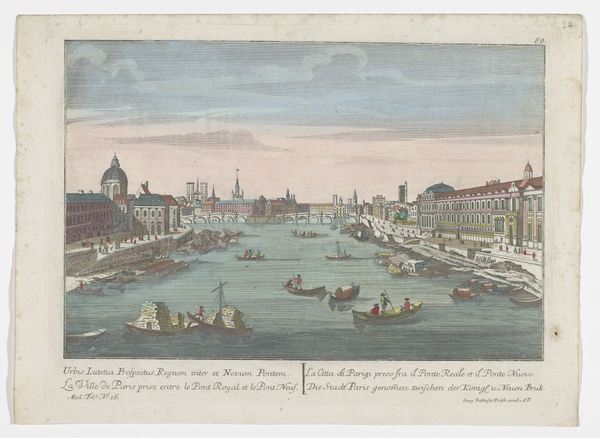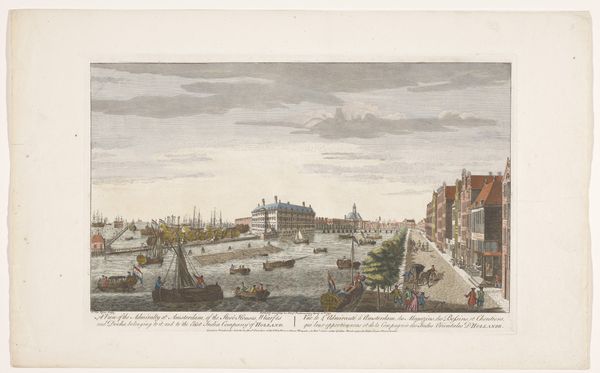
painting, paper, watercolor
#
painting
#
landscape
#
paper
#
watercolor
#
coloured pencil
#
romanticism
#
cityscape
#
watercolour illustration
#
genre-painting
#
watercolor
Dimensions: height 198 mm, width 235 mm
Copyright: Rijks Museum: Open Domain
Curator: Take a look at "Gezicht op de Binnen-Amstel," dating probably from 1810 to 1825, attributed to Evert Maaskamp. Editor: It's such a serene scene! The pastel-like washes create a gentle, almost dreamy quality, like a memory of Amsterdam rather than a strict depiction. Curator: Exactly. And consider the materials: watercolour and possibly coloured pencil on paper. This speaks to its function, not as a high art commission perhaps, but likely produced for sale to tourists or as part of a series. It hints at the developing market for picturesque views of the city. Editor: So, a commodity. Interesting. How does the depiction of the cityscape reinforce or perhaps challenge the traditional view of Dutch prosperity? Are there hints about the socio-political context in the composition? Curator: Note how the figures on the bridge appear to be from varying social classes, hinting at a shared urban space, although idealized, and it shows people making use of infrastructural works such as the drawbridge. The meticulousness of the architectural drawing—a testament to craft and observation—highlights emerging civic pride in Amsterdam during a tumultuous period after French occupation. Editor: So, not merely a charming vista. What does the relative availability and cost of watercolor contribute to understanding the growth of a kind of tourist art during that period? I’m thinking of a material link between burgeoning commercial markets, technological advancement, and social identity expressed through visual culture. Curator: An interesting line of inquiry! Cheaper papers, easily sourced pigments allowed more production—more art—for a broader audience. It blurs traditional lines; prints made it affordable to show people enjoying Amsterdam sights. Editor: Ultimately this simple artwork opens avenues to larger discussions around material production, tourism, social hierarchy, and evolving ideas of place in early 19th-century Netherlands. Curator: Indeed, far more than just a pretty picture; it’s a window into the complexities of a changing world seen through accessible, available materials.
Comments
No comments
Be the first to comment and join the conversation on the ultimate creative platform.
